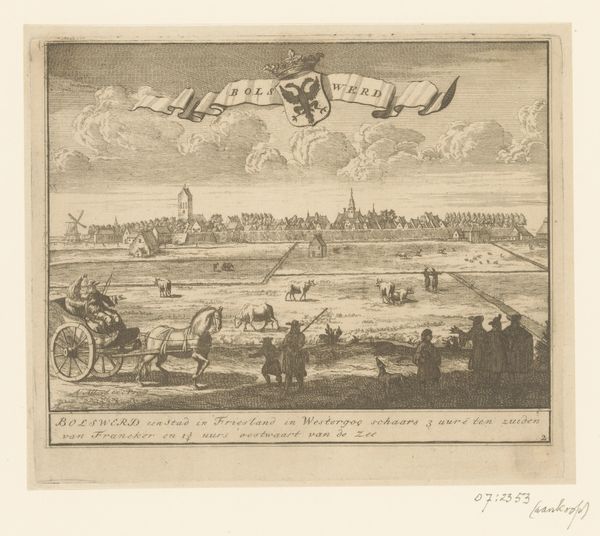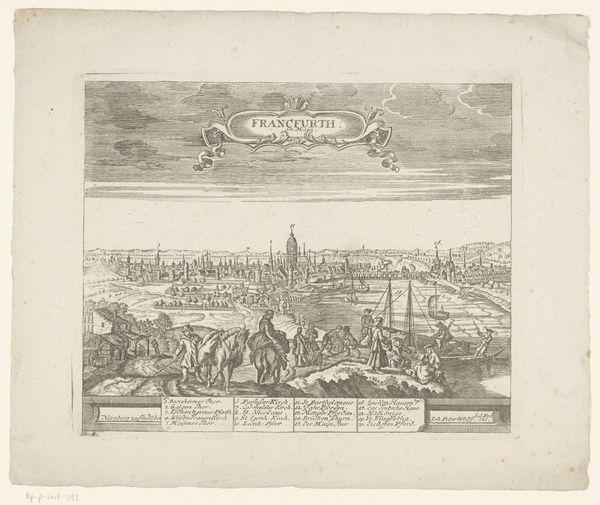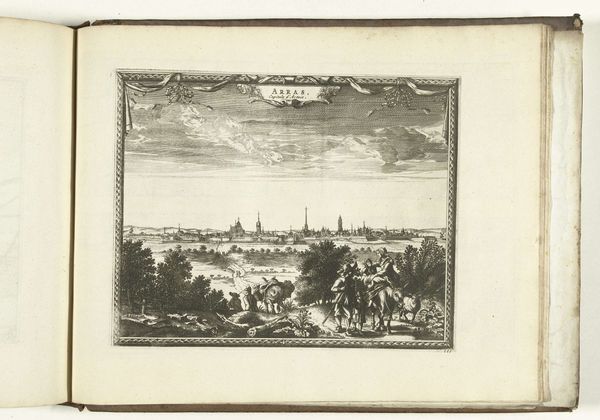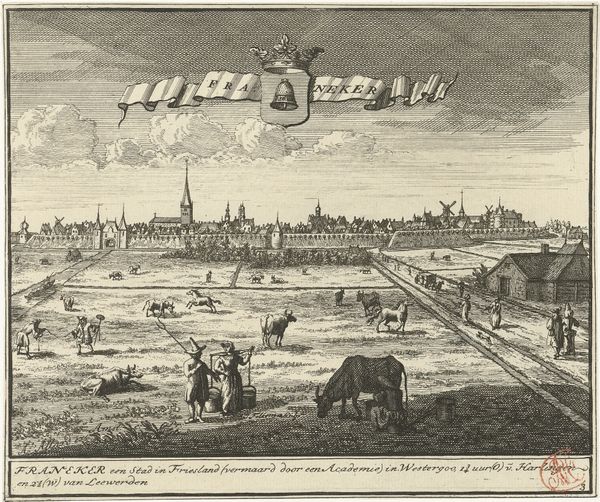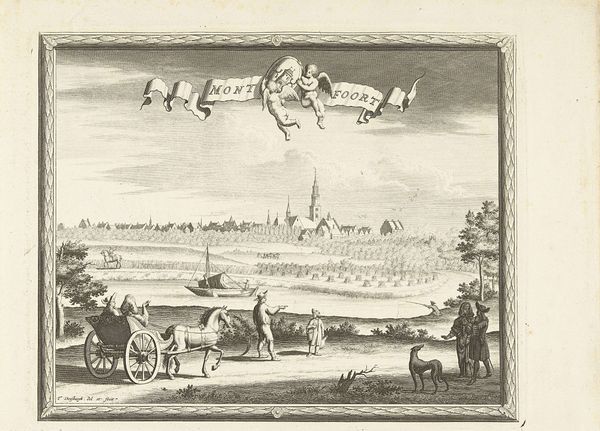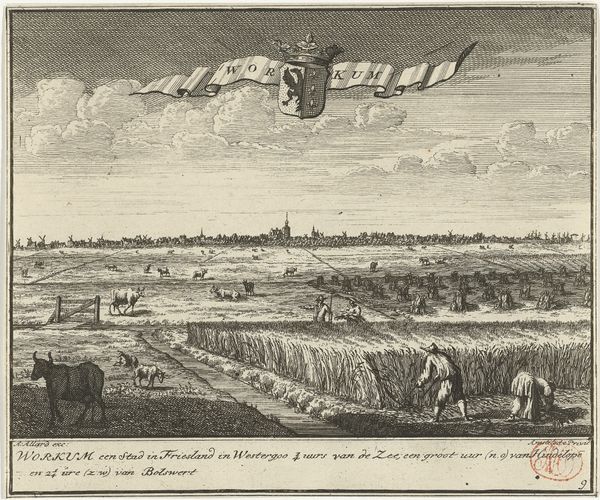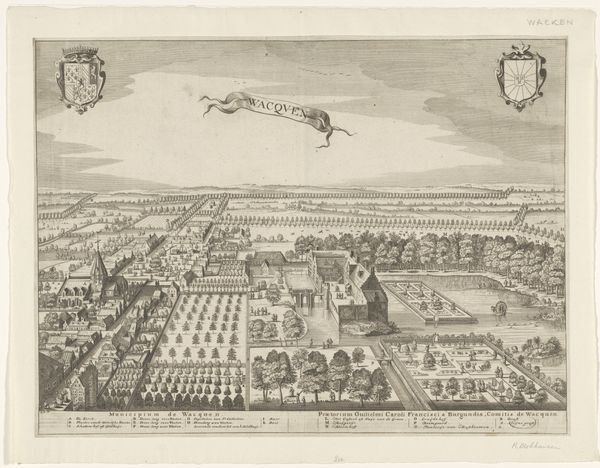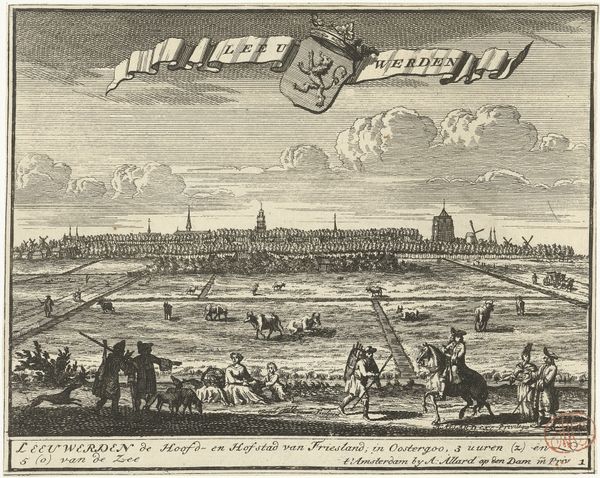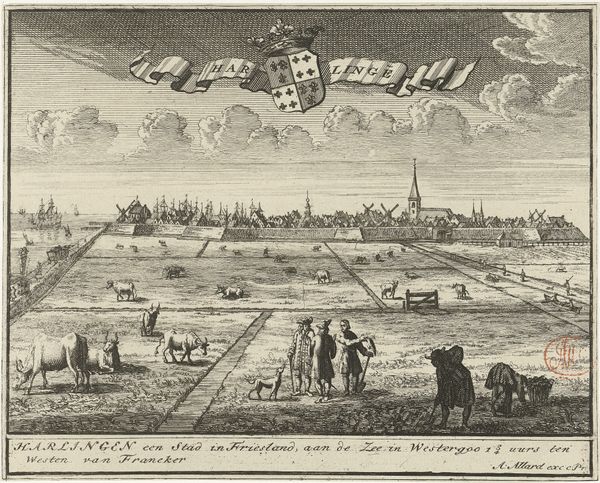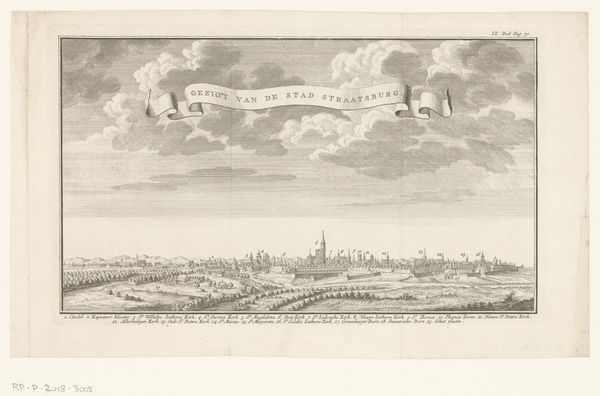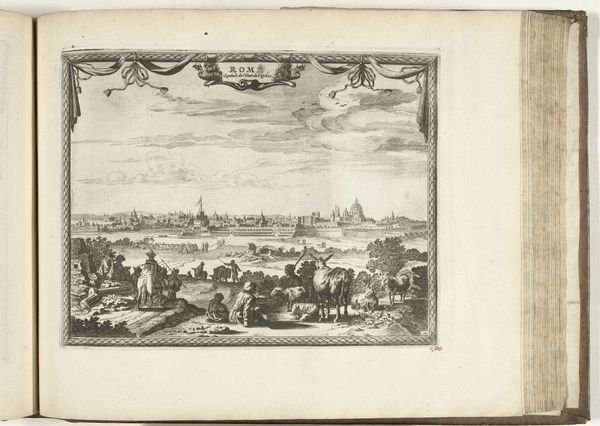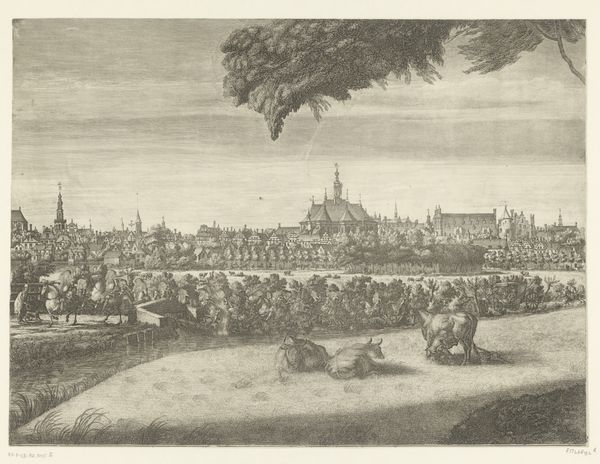
print, engraving
#
dutch-golden-age
# print
#
landscape
#
cityscape
#
history-painting
#
engraving
#
realism
Dimensions: height 256 mm, width 317 mm
Copyright: Rijks Museum: Open Domain
Curator: Here we have "View of Amersfoort from the Mountain," a Dutch Golden Age engraving likely created between 1683 and 1714. Editor: There's something immediately captivating about the level of detail, considering this is a print. You can almost feel the weight of the paper. It's so intricate, especially with the figures in the foreground set against that distant skyline. Curator: It certainly reflects a particular societal gaze. Amersfoort, presented with cherubic symbols of its civic pride hovering above, isn’t merely depicted; it's presented as a symbol of power, framed by a clear hierarchy. Those foreground figures... we see gentrified figures on horseback towering over others who remain sedentary. This reveals more than just geography, wouldn't you say? Editor: Absolutely. Engravings like this were often commissioned, and the materials themselves – the paper, the ink, the very act of printing and distribution – speaks to the rising merchant class. We see their interest in documentation but also control and even ownership over how the landscape and, by extension, its inhabitants, are represented. Curator: The deliberate contrast in how people are shown—the leisure of the equestrian class versus the more grounded postures—begs the question of labour and social structures. It encourages viewers to examine their place within this framework and their access to representation. Editor: Exactly. And think about the craft involved! Every line had to be painstakingly carved. It's not just an image; it’s a testament to labor and skill. Even the act of making the print replicable points to broader changes in art consumption and how images start circulating amongst a wider public, who, crucially, can afford to engage with this commodity. Curator: That’s fascinating to think about – it takes this out of purely art historical appreciation. By drawing on sociological theories and focusing on those very methods of production, circulation, consumption, one can dissect its cultural influence and historical moment more dynamically, understanding it less as just an artistic vision and more of a complex social artifact. Editor: I agree. It changes how we look, from simply admiring the perspective to acknowledging the very material and social processes embedded within the work. It urges us to examine production itself. Curator: Which in turn impacts its perception and ultimately meaning for contemporary audiences, don't you think? Editor: Absolutely. Looking at the print now, it shows not just the cityscape but how linked labour, the art market and image production were.
Comments
No comments
Be the first to comment and join the conversation on the ultimate creative platform.
